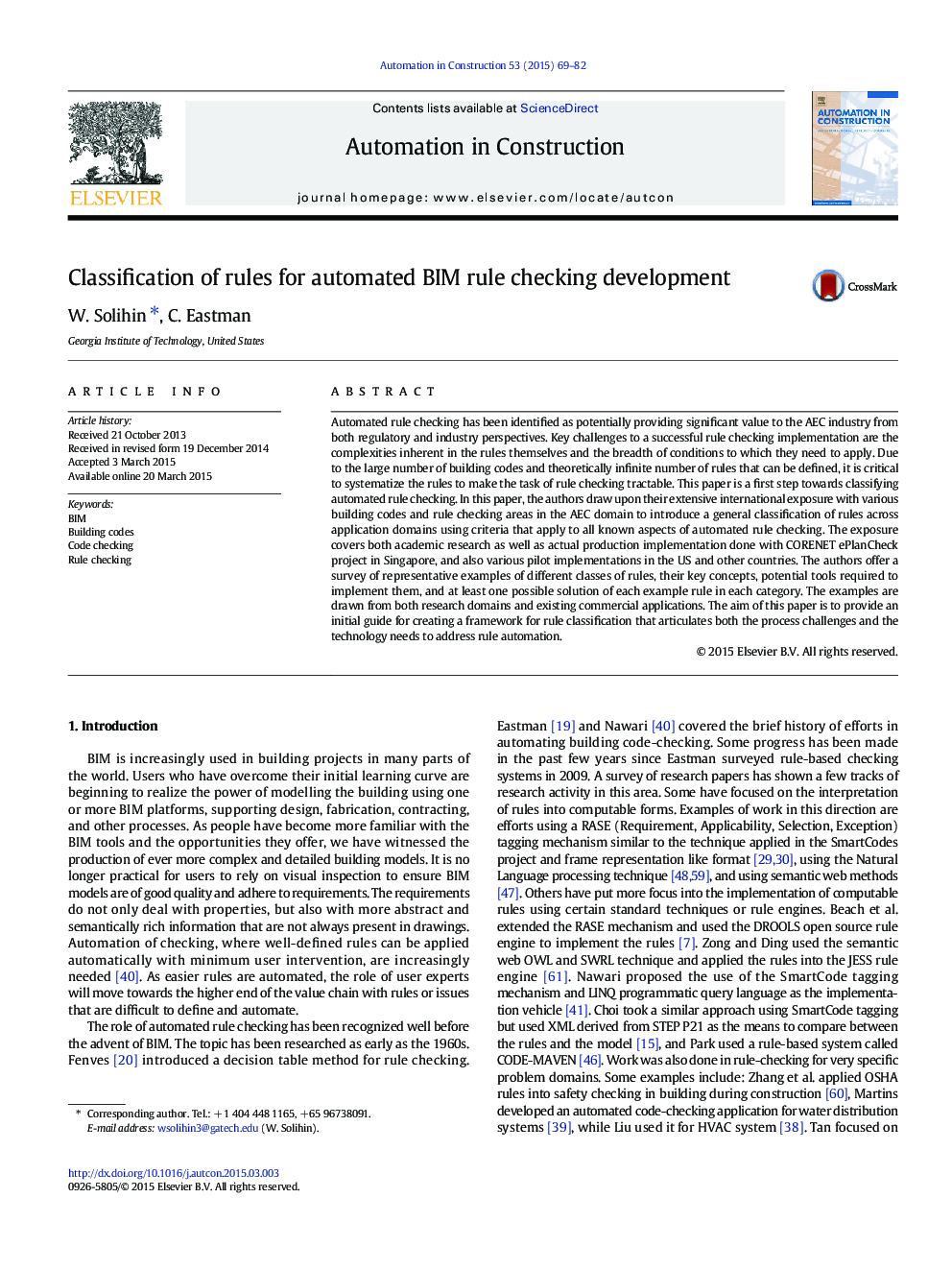| Article ID | Journal | Published Year | Pages | File Type |
|---|---|---|---|---|
| 246356 | Automation in Construction | 2015 | 14 Pages |
•Rules for BIM Models are classified according to their computational complexity.•Representative samples of rules from various building codes and others are presented.•The classifications outline prerequisites for effective rule checking tool.•This research highlights tools and techniques to address automation of the rules.•This research offers systematic approach to help progress in research and development.
Automated rule checking has been identified as potentially providing significant value to the AEC industry from both regulatory and industry perspectives. Key challenges to a successful rule checking implementation are the complexities inherent in the rules themselves and the breadth of conditions to which they need to apply. Due to the large number of building codes and theoretically infinite number of rules that can be defined, it is critical to systematize the rules to make the task of rule checking tractable. This paper is a first step towards classifying automated rule checking. In this paper, the authors draw upon their extensive international exposure with various building codes and rule checking areas in the AEC domain to introduce a general classification of rules across application domains using criteria that apply to all known aspects of automated rule checking. The exposure covers both academic research as well as actual production implementation done with CORENET ePlanCheck project in Singapore, and also various pilot implementations in the US and other countries. The authors offer a survey of representative examples of different classes of rules, their key concepts, potential tools required to implement them, and at least one possible solution of each example rule in each category. The examples are drawn from both research domains and existing commercial applications. The aim of this paper is to provide an initial guide for creating a framework for rule classification that articulates both the process challenges and the technology needs to address rule automation.
